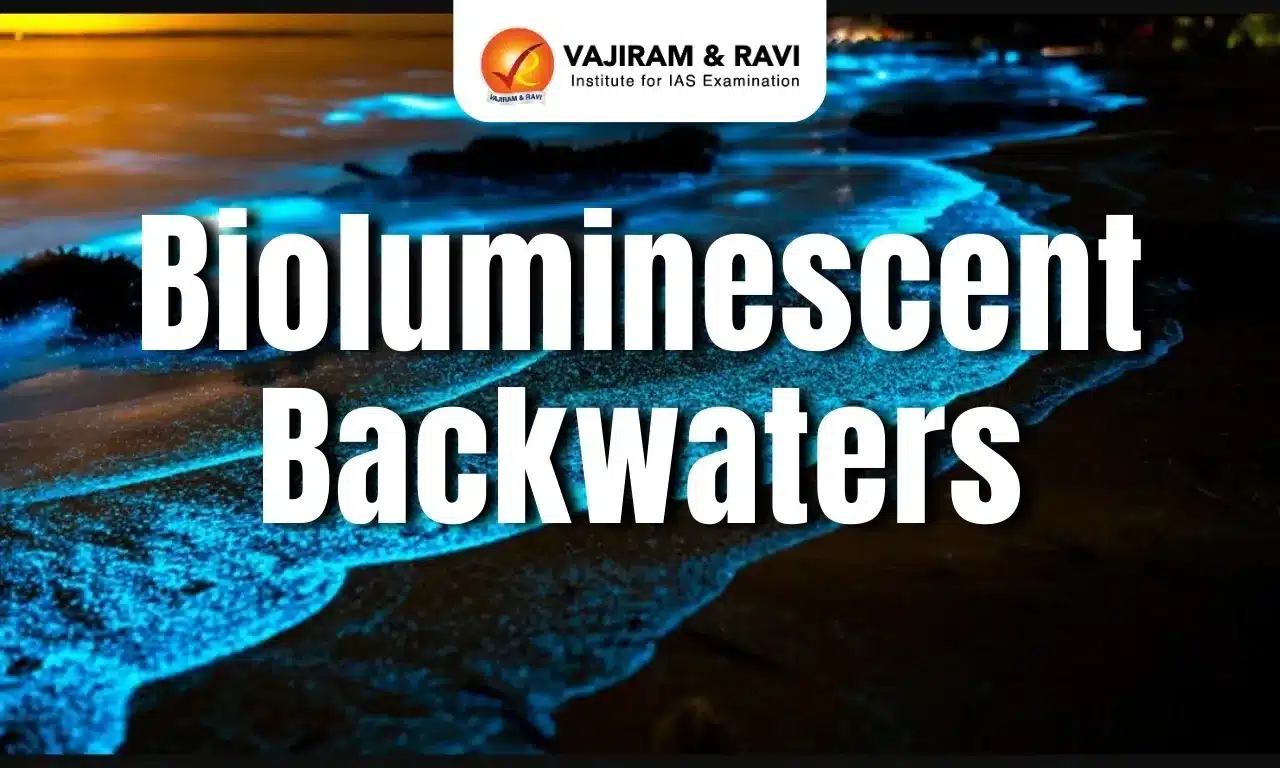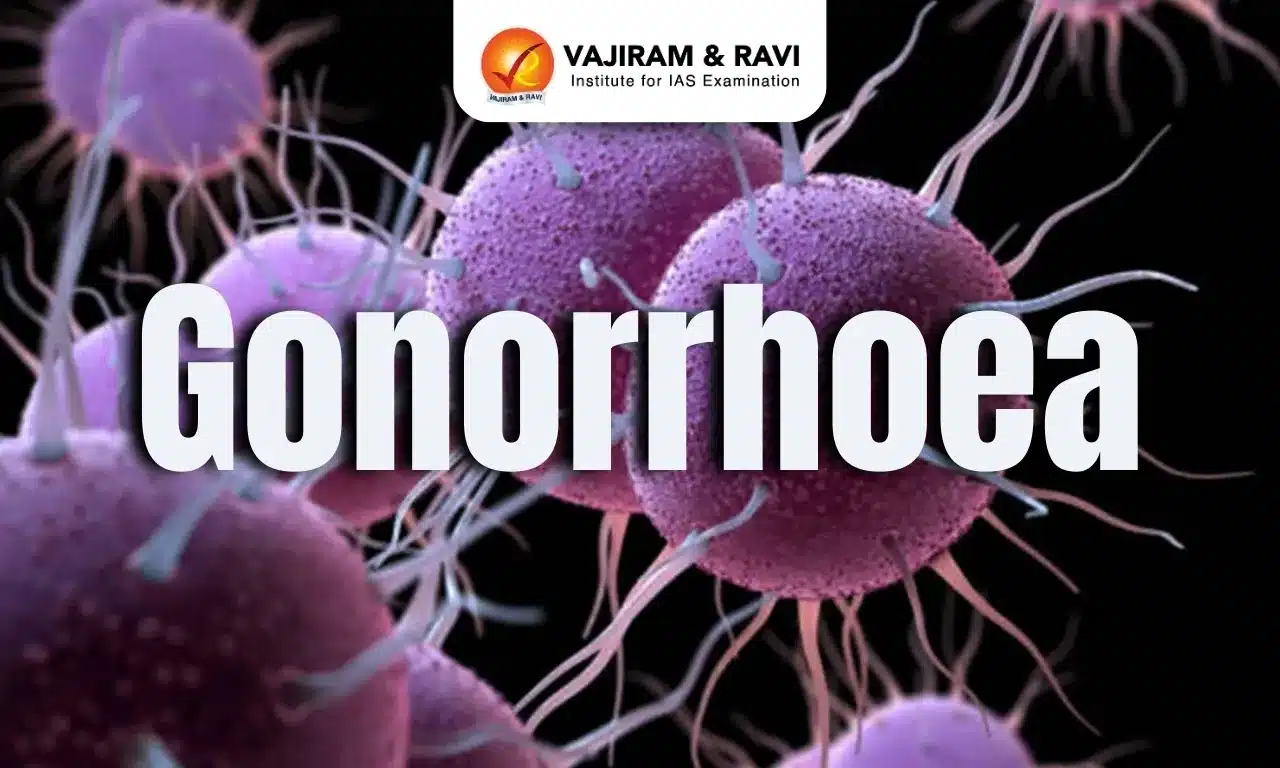Bioluminescent Backwaters Latest News
Recently, bioluminescent blue waves were observed in the backwaters of Kochi, Kerala, attracting tourists but raising concerns among ecologists and fishers due to underlying environmental degradation.
About Bioluminescence
- Bioluminescence refers to the natural emission of light by organisms such as bacteria, fungi, and algae triggered by mechanical disturbances in coastal and estuarine waters.
- The species most commonly responsible is Noctiluca scintillans, a type of dinoflagellate plankton, also known as “sea sparkle”.
- This glow results from chemical reactions inside specialized structures called scintillons and appears primarily blue but can also show red or brown hues depending on species concentration.
- The phenomenon is commonly observed from March to May, locally termed as “Kavaru” in Malayalam.
Scientific Background
- Eutrophication—caused by nutrient overload (especially nitrates and phosphates) from industrial runoff and sewage discharge—is a major driver.
- Salinity levels between 30-35 ppt, rising temperatures, and reduced rainfall contribute to bloom formation.
- When concentrations exceed 500,000 organisms per litre, it leads to red tides, which can severely disrupt marine ecosystems.
Ecological and Economic Impacts
- Plankton, while a key part of marine food chains, in large numbers release substances like dimethyl sulphide, ammonium, and dissolved organic carbon, causing Harmful Algal Blooms (HABs).
- HABs lead to hypoxia (oxygen depletion), resulting in mass fish mortality and affecting biodiversity and aquaculture operations.
- Fishing communities experience significant losses as fish migrate away from bloom-affected zones, leading to declining catches and reduced income.
- Toxins such as domoic acid and those from Alexandrium can cause amnesic or paralytic shellfish poisoning, harming both marine life and human health.
Bioluminescent Backwaters FAQs
Q1. What causes bioluminescence in backwaters?
Ans. Dinoflagellates (e.g., Noctiluca scintillans) emit light through chemical reactions when disturbed, creating glowing waters.
Q2. Where are bioluminescent backwaters found in India?
Ans. Kerala’s Alleppey and Tamil Nadu’s Pitchavaram mangroves are prime examples.
Q3. What ecological role do they play?
Ans. Indicate healthy marine ecosystems but signal algal blooms if excessive, threatening fish populations.
Source: DTE
Last updated on December, 2025
→ Check out the latest UPSC Syllabus 2026 here.
→ Join Vajiram & Ravi’s Interview Guidance Programme for expert help to crack your final UPSC stage.
→ UPSC Mains Result 2025 is now out.
→ UPSC Notification 2026 is scheduled to be released on January 14, 2026.
→ UPSC Calendar 2026 is released on 15th May, 2025.
→ The UPSC Vacancy 2025 were released 1129, out of which 979 were for UPSC CSE and remaining 150 are for UPSC IFoS.
→ UPSC Prelims 2026 will be conducted on 24th May, 2026 & UPSC Mains 2026 will be conducted on 21st August 2026.
→ The UPSC Selection Process is of 3 stages-Prelims, Mains and Interview.
→ UPSC Result 2024 is released with latest UPSC Marksheet 2024. Check Now!
→ UPSC Prelims Result 2025 is out now for the CSE held on 25 May 2025.
→ UPSC Toppers List 2024 is released now. Shakti Dubey is UPSC AIR 1 2024 Topper.
→ UPSC Prelims Question Paper 2025 and Unofficial Prelims Answer Key 2025 are available now.
→ UPSC Mains Question Paper 2025 is out for Essay, GS 1, 2, 3 & GS 4.
→ UPSC Mains Indian Language Question Paper 2025 is now out.
→ UPSC Mains Optional Question Paper 2025 is now out.
→ Also check Best IAS Coaching in Delhi

















